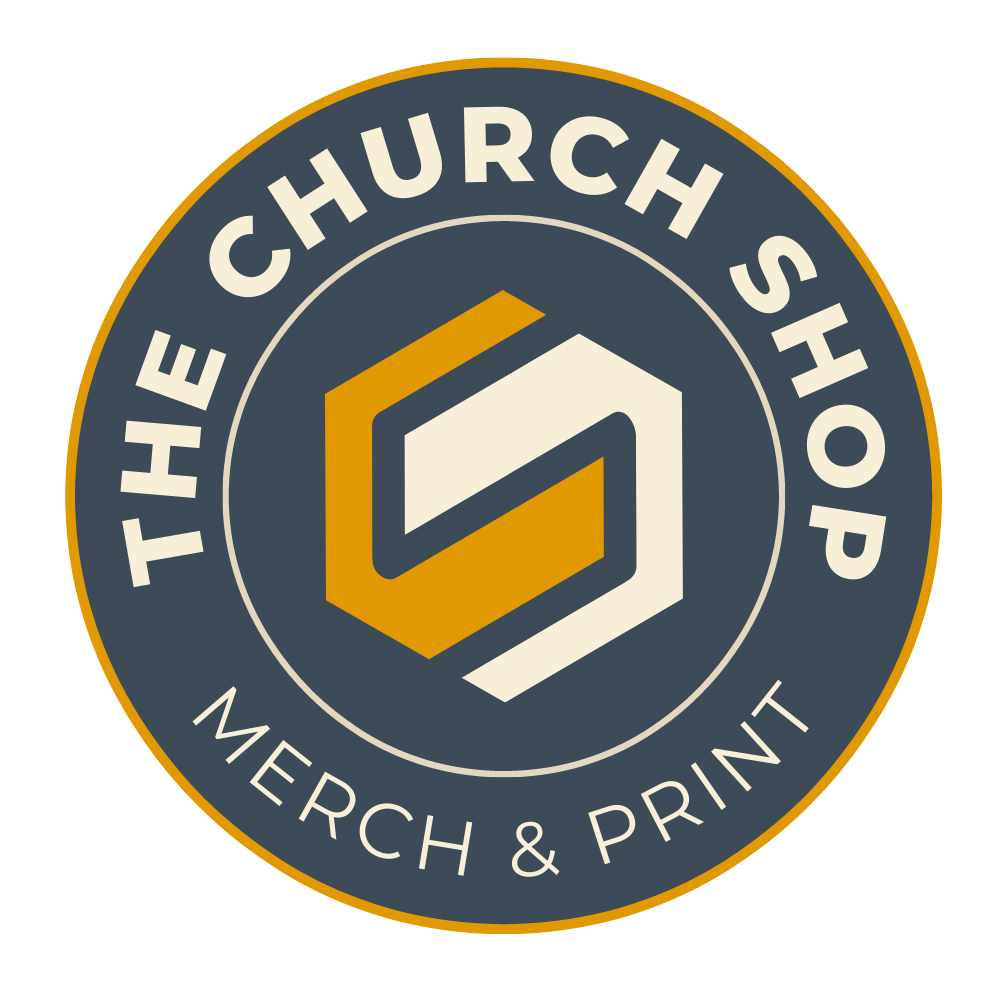Let's talk Direct To Garment Printing! This innovative printing method has revolutionized the apparel industry, making it easier than ever to create custom designs. Whether you're a new to print on demand, or expanding your offering with The Church Shop, this article will provide you with valuable insights into DTG printing, including its advantages, disadvantages, and the best fabrics to use for optimal results.
What is DTG Printing?
Direct-to-garment (DTG) printing is a technique that uses modified inkjet technology (think the inkjet printer in your office) to apply water-based inks directly onto clothing. This method allows for intricate, full-color designs with minimal setup, making it a popular choice for small-quantity orders. Unlike traditional screen printing, DTG printing is less labor-intensive and requires significantly less setup time, making it a cost-effective solution for fundraising and offering a wide variety of products without inventory. With DTG, there are no minimum order requirements, so you can order as few or as many products as you like!
How Does DTG Printing Work?
The DTG printing process consists of several key steps, which may vary slightly depending on the printer model. Here are the essential stages of the DTG printing process:
Pre-Treatment Process
Pre-treatment is vital for ensuring that printed designs adhere effectively to the garment. This process enhances color vibrancy and prevents the ink from washing off. Here at The Church Shop. Our teams use Pre-Treatment Machines:
- Pre-Treatment Machine: This device automatically applies the pre-treatment solution to the garment, streamlining the process.
- Note: Pre-treatment sometimes leads to what looks like stains on garments. It will come off in the first wash. If you ever see what looks like a water mark on your garment, just wash it!
Printing Process
Once the pre-treatment has dried, the garment is placed in the DTG printer for digital printing. For garments that are not white, a white underbase is applied first to enhance the vibrancy of the final print. Following the underbase, the printer adds the remaining colors using a combination of cyan, magenta, yellow, and black inks.
Curing Process
After printing, the garment must undergo a curing process to ensure the ink adheres properly and resists washing. For speed, efficacy and consistency, we use conveyor drying to cure the ink.
DTG Printing: Pros and Cons
DTG printing has gained popularity due to its unique advantages. However, it’s essential to consider both the strengths and weaknesses of this printing method:
Pros
- High-Detail Image Quality: DTG printing excels in producing intricate designs with a full spectrum of colors, resulting in high-quality prints.
- No Minimum Order Quantity: Customers can order as few or as many products as they wish, making it a cost-effective solution for on-demand printing.
- Environmentally Friendly: Modern DTG technology utilizes eco-friendly inks and is energy-efficient, reducing its environmental impact.
Cons
- Limited Textile Compatibility: DTG printing works best on fabrics with at least 50% cotton content to enhance ink absorption and print quality. However, advancements in technology are expanding the range of compatible textiles.
- Limited Application Surfaces: Unlike sublimation printing, which allows for all-over prints, DTG printing has restrictions on print surfaces, requiring more manual setup for additional print areas.
- Not Optimal for Bulk Orders: DTG printing is generally slower than other methods, making it less suitable for large-scale orders, but it remains ideal for print-on-demand and eCommerce businesses.
Best Fabrics for DTG Printing
Since DTG printers utilize water-based inks, natural fabrics yield the best results. These fabrics absorb ink effectively, resulting in vibrant colors. The most suitable textiles for DTG printing include:
- Cotton
- Ring-spun cotton
- Combed and ring-spun cotton
- Organic cotton
- Linen and other natural textiles
Unleash your creativity with the power of direct-to-garment t-shirt printing! Explore our extensive range of products and see how your designs can come to life on various apparel and accessories. From classic t-shirts to cozy hoodies, the possibilities are endless.
DTG vs. Screen Printing
Choosing the right printing method for your custom apparel can be challenging. Below is a quick comparison of DTG and screen printing to assist you in making an informed decision:
| Feature | DTG printing | Screen printing |
|---|---|---|
| Quality | Unrivaled photorealistic prints. | Vibrant, high-quality prints. |
| Durability | Withstands over 50 washes. | Best choice for long-lasting garments. |
| Design complexity | Excellent for intricate designs. | Limited to simpler designs. |
| Sustainability | Water-based inks, energy-efficient. | Uses more water, possible overproduction, not as sustainable. |
| Minimum order | Print as few as one. | Minimums typically 10-100 units. |
| Production time | Slower, best for small orders. | Faster for bulk orders after setup. |
| Cost | Affordable for small orders, not ideal for bulk. | Expensive for small orders, cost-effective for bulk. |
Key Takeaways
- DTG printing excels in producing high-quality, small-batch, detailed designs.
- Screen printing is ideal for bulk orders, simpler designs, and maximizing garment longevity.
